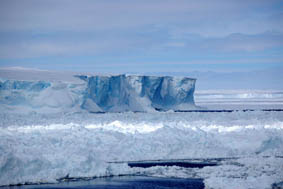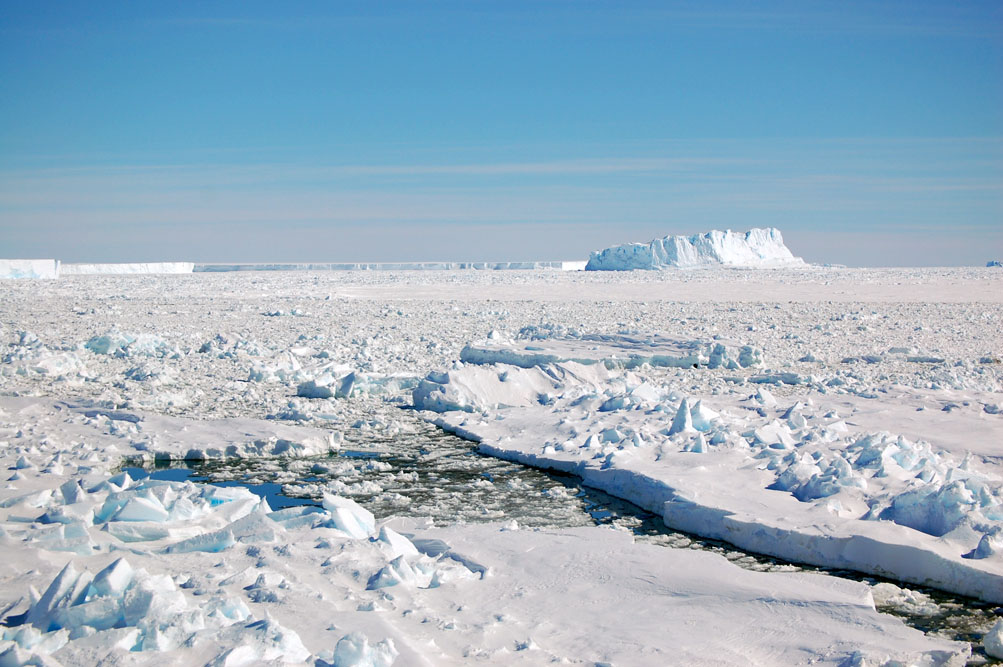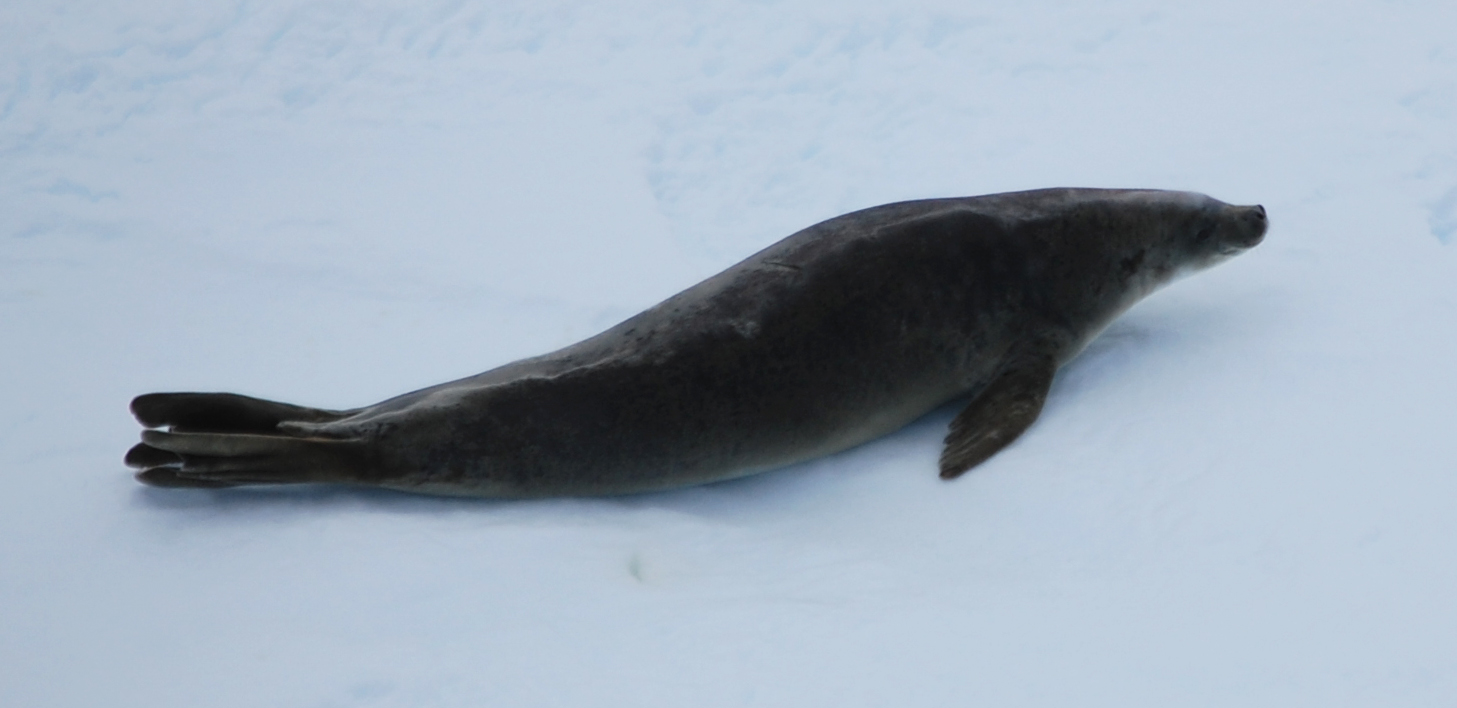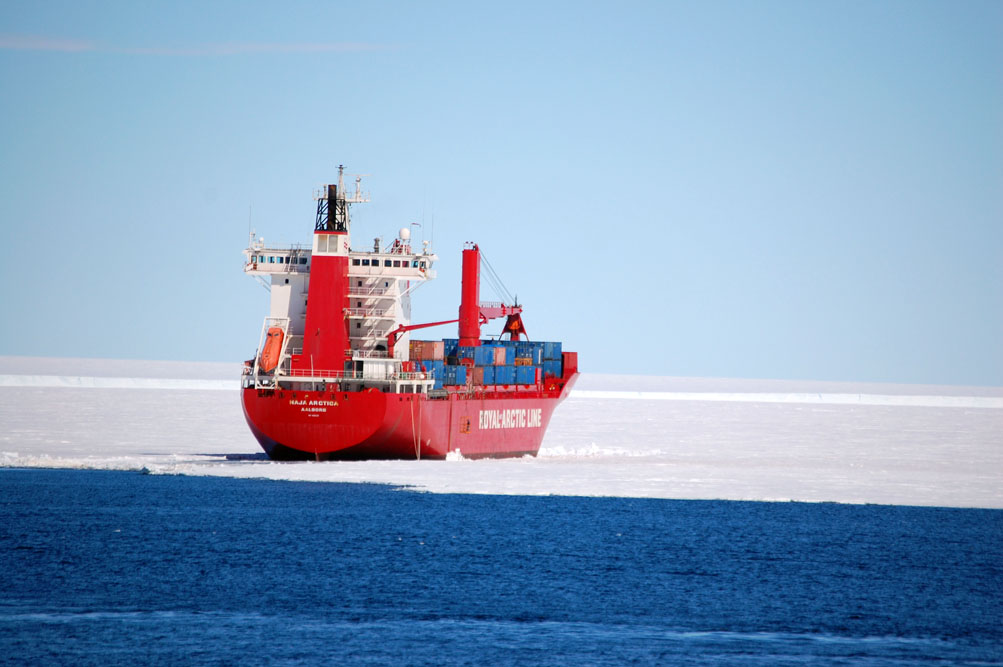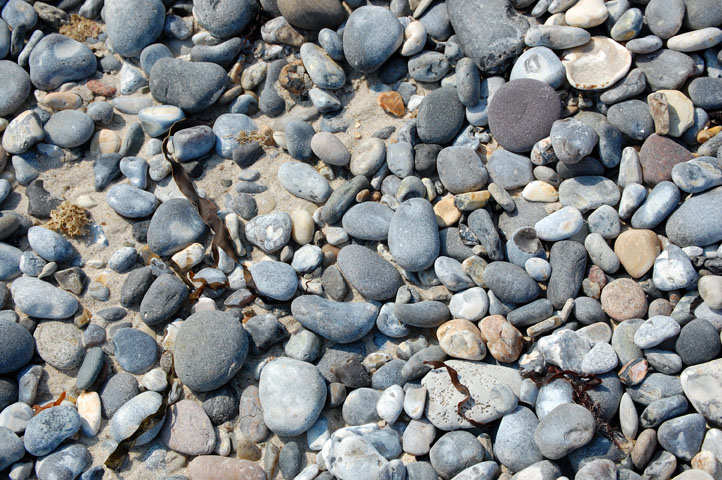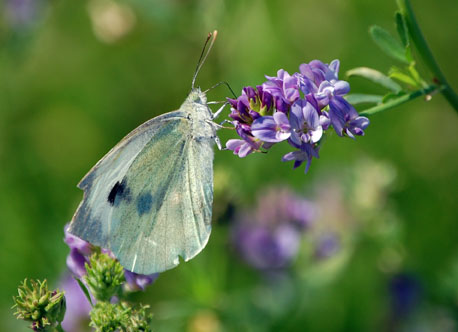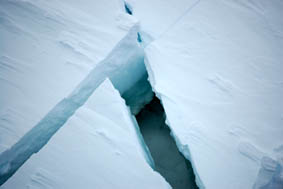ANDEEP-SYSTCO – an expedition to the end of the world
In November 2007 I was fortunate enough to join a group of 50 international scientists on a cruise to Antarctica. Starting from Cape Town (South Africa) we entered the German research ice breaker “Polarstern” and headed southwards along the Greenwich Meridian (0°) as far as the German Research Station Neumayer II in the shelf ice of the Antarctic continent. Along the way back and forth we took samples from the water surface down to the deep sea to study the processes coupling all realms throughout the water column. We wanted to know what forces drive the different ecosystems, how they are connected, and what consequences changes in one system have on the others. Along the line we were, of course, also curious what species we’d find in the Southern Ocean. During the ten weeks on board birds, seals and whales were counted, zooplankton (e.g. krill) was quantified, water and sediment chemists were measured and animals living on and in the seafloor were collected, identified and described – and all that despite the harsh climatic conditions around us. No need to say that I have never been that cold before in my life. But it was still until now the coolest (no pun intended) think I’ve ever experienced. I mean – who gets to see Antarctica…
While on board I wrote a diary for the first time in my life. And in the following I’d like to give you a little excerpt in my life on board of “Polarstern”. It’s a rather personal view and only little scientific. So, if you are more interested in the scientific part, check the homepage of CeDAMar and CAML, or feel free to just email me with your questions.
Week 1
27.11.2007
The big day was a Tuesday. I actually went to University in the morning to listen to a talk of one of our students and enjoy a last weekly tea time with my colleagues. After that I tied up my flat, closed it for the door for two and a half months and headed off to my parents. They personally dropped me off at the airport and at 18h I found myself in the plane that brought me to Frankfurt. There I finally met some of my future boat mates and the fun could begin. So I thought…
In the end I fell asleep on the plane, woke up with a major headache only to find that I slept through most of the night and that the new day had already begun.
28.11.2007
We landed in Cape Twon two hours late. Fortuanetly, all our luggage made it to South Africa safely. Trust me, the worst fear for scientists entering a vessel for several weeks is to lose their luggage on the plane. Can you imagine being stuck in a boat with only one set of clothes including your undies? That’s something that you don’t want.
On board we were met by the rest of the bunch joining us on our big adventure. Michi Schrödl, from the Zoological Museum in Munich, was kind enough to carry my suitcase to my chamber which happened to be right next door to his – something that turned out to be a perfect coincident during the cruise. My chamber was C322, and I shared it with the CAML representative on board Vicky Wadley from Australia (well actually Tasmania, I think).
The remainder of the day was spend with beer bottles in hand on the upper deck where we spent the time waiting for departure. At 21h the ship finally “set sail” and we left the port of Cape Town with the setting sun over the table mountain and the city’s skyline to bid us farewell. See you in ten weeks, Cape Town.
29.11.2007
The day was mainly filled with getting settled. One thing that definitely had to get settled for all of us non-sailor participants was our stomach. The slight rolling and rocking of the vessel left us all in a daze and different levels of sea sickness. I’m happy to be not too effected by it. I do get sea sick but with a little help of some pills I mostly get better within a few days. In a scientific point of view getting settled meant to hold numerous meetings coordinating our stay on board and organizing our labs. Our equipment was stored in boxes in big containers which had to be unpacked. But that turned out to result in a shock to my working group (the benthic group, scientist working with the animals from the sea floor) – our container was put on the front deck close to a wall and separated from the working deck by basically the whole ship… In consequence all our heavy boxes and gear had to be carried through the narrow hall ways of the ship’s interior manually. Worst of all our sampling gear, the epibenthic sledge, was too big to fit through the corridors. At that point none of us had an idea how to get it to the after deck. But we had faith into the ship’s crew – they promised to make it possible the next day, somehow. At night we all met in the “Zillertal”, the board bar, to celebrate already the first birthdays on board. Unbelievable, it’s the first day and already three people had their birthdays. This promised to be an interesting cruise.
30.11.2007
As a participant on board you get cared for 24/7. We were provided with hot and cold breakfast at 7.30h to 8.30h, tea time at 10h, hot lunch around noon, coffee and cake at 15h and hot dinner at 17.30h. Lucky, there was also a gym and a pool on board so that you could get rid of all the calories that you accumulated during the again at night – my constant urge to spend my free time there after some time earned me the nickname “endorphin junkie”. While I also started to leave out breakfast in course of the cruise I was kind of shocked that I almost missed it the second day here, I more or less overslept. By the time I got on deck the crew had already started to transport the epibenthic sledge from the front deck to the after deck. Man, that was a sight. They actually took the separate parts of the gear, tied it to long robes connecting it to front and back of the ship, attached some buoys to it and just pushed it over board to have it float along the vessel to till it reached the after deck. There the cranes took it out of the water again and there it was then waiting for us to be put together. What we did then, by the way.
01.12.2007
December first was the day we all started to realize that this year we’d be spending Christmas away from our families. But also, we’d definitely have white Christmas this year. We set up our Christmas calendars in our cabins and in the labs and enjoyed to open up our first door. We also set up more of our gear. We’ve been having problems with the deep-sea camera system and the next days would tell if we’d be able to deploy it during our first station. Further meetings followed, planning – coordinating – planning a bit more – and coordinating a bit more. In my free time I relaxed on deck while it was still warm outside and had our Dutch bird specialists teach me the names of what flew around the ship. We saw: white cheeked petrels, storm petrels, giant petrels, wandering albatrosses and greyheaded albatrosses and the helicopters. Oh yeah, I forgot to mentioned until now, the “Polarstern” is equipped with two helicopters that are used to transport people between the vessel and stations on land and to observe whales, seals and penguin colonies.
02.12.2007
What a boring day. Transit day before or between stations can be really boring on board sometimes. Normally, there is not much to do unless you have your samples to work on. But since we hadn’t had a sampling station yet, we didn’t have samples. And my computer was unavailable to me because it was being checked by the ship’s IT center to make sure that it didn’t have any viruses and bugs. So, I couldn’t work on anything I brought with me – like data analyses and publications. In the end I ended up bugging everyone around me by simply hanging out and being in the way, and we started practicing Christmas carols for our Christmas party. We started a choir, and additionally I brought my recorded, Vicky brought her flute and Saskia Brix tormented the board piano (I a positive way of course). Also, one funny thing that is a tradition during expeditions started: the weighing club. To monitor your body weight once a week participants were weight with the scale normally used for freight. You then bet your money whether you’ll gain or lose weight during the upcoming week. The proceeds from these bets are donated once a year for charity.
03.12.2007
Over night the weather had significantly changed. A storm had caught us and the temperature had dropped as well. There was no denying, we were heading straight towards the South Pole. So, it was no wonder that many of us suffered from stronger bouts of sea sickness by now. For me that basically meant that I had problems staying awake. I get really drowsy when sea sick. But that was not the noteworthy event of the day. Today, at 47°35’S and 5°13’E I actually got to see my first iceberg ever. It had three tips and looked pretty lost being surrounded by noting than water. To me it was a beauty, the biggest ice mass I have ever seen. I thought it was huge. Funnily the more experienced Antarctic travelers were laughing at its size, saying it was tiny. I couldn’t believe them. Later-on during the cruise I, grumpily, had to admit that they were right. But still, it was my first iceberg, I mean how great is this, it was fantastic…
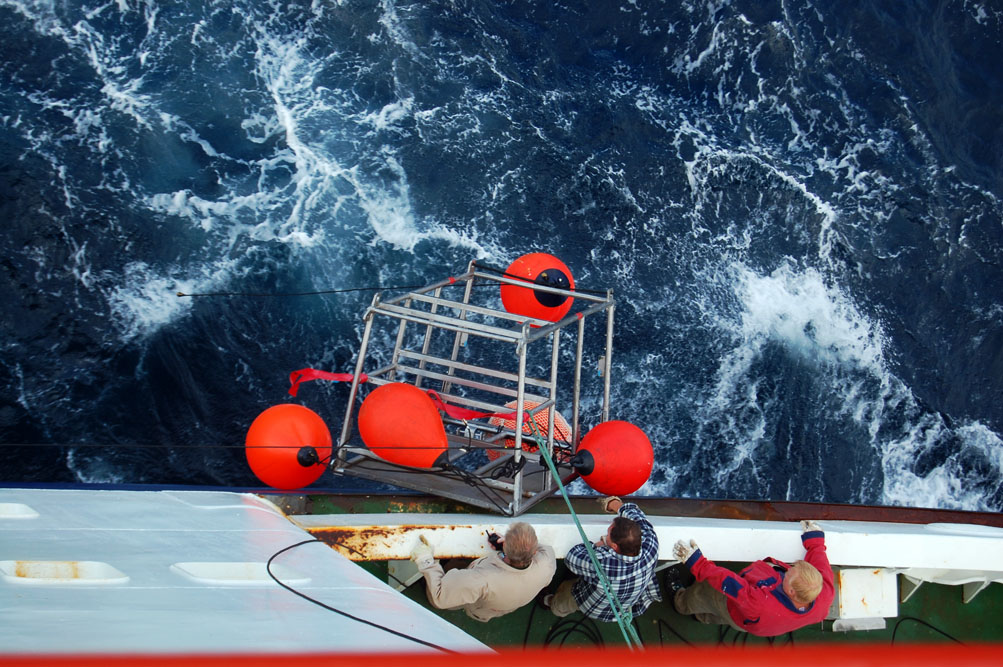 |
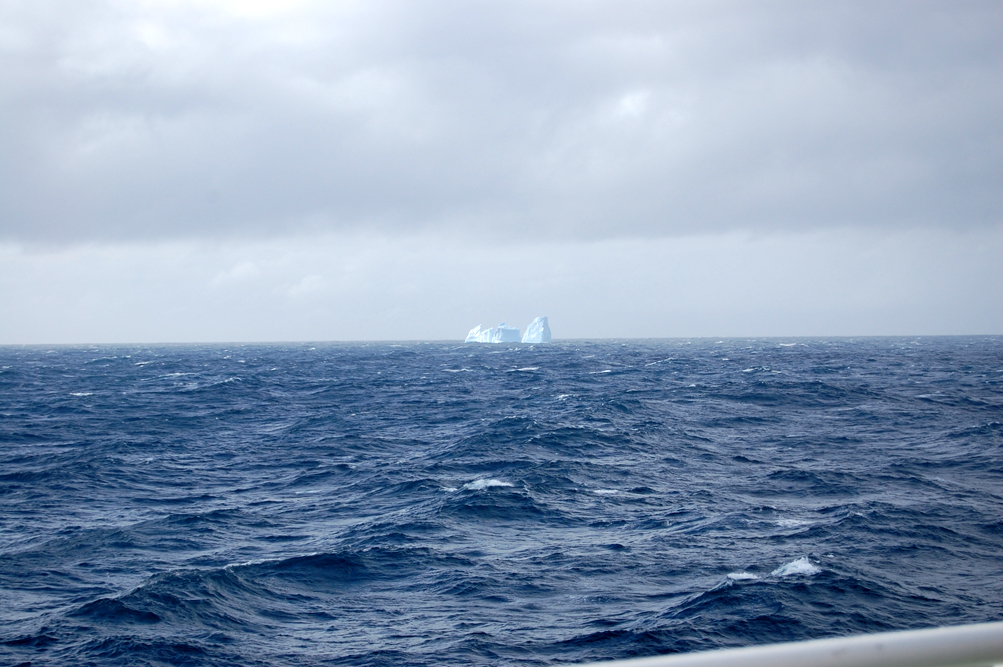 |
Week 2
04.12.2007
This was the last day of relaxing. Tomorrow the first station would begin and we were all pretty excited.
05.-06.12.2007
Hurrayyyyyyyyyyy… finally we got work to do. We reached our destination around noon. Enne (Enrico Schwabe) and I have set up the box-corer in the morning. A box-corer is basically a box of 0.5x0.5x0.5m that stitches out sediment from the seafloor after being pushed in there by heavy lead weights. Then I started to kill some time because ma team was only scheduled for 0.30h in the night. Yeah, that’s right. On a vessel there is no difference between day and night. Work continues 24h through and somehow I’m always finding myself on night shifts no matter what cruise I’m on. The first box-corer was a great success and definitely compensated the lack of sleep. Unfortunately the sieving of the sediment was rather tedious to not-working at all. Imagine you have a ton of sediment, then you put it into buckets in small portion, give fresh seawater on top and then mix it with your bare arms until it’s all diluted. After that you give this soupy mixture onto small sieves of 500 and 300µm mesh size. What remains in the sieves then contains lots of tiny millimeter sized animals with still quite some sediment and is then out into jars and fixed with formalin or ethanol. Especially my little bristle worms (polychaetes) are found in the box-corer. Later in the lab I sort them out, identify them, describe new species, document their distribution ranges and analyze their diversity. Polychaetes are found in all sediments in all oceans of the world. They are used as so called bioproxy, since their number and species composition can tell lots about present, but also past, ecosystem conditions. So, understanding polychaetes can help to understand ecosystems and effects of anthropogenic disturbances, climate change and normal/natural changes. But back to the topic of sieving. The sieving didn’t work the way we tried it. It took way to long and after only few minutes of mixing sediment and water our arms were blue of cold. After three hours of desperate work there was no end in sight and we all thought that we’d probably collapse from the cold before we even got close to the bottom of our corer. So, a different method was needed. And that’s when my eyes fell upon three giant buckets whose bottoms were removed and substituted by sieves of exactly the mesh size that we needed. Without second thought we took these sieves, put our sediment in there, entered the water hose to it so that there was a constant water flow in the buckets and started shaking these. It was amazing. Shaking the buckets we all warmed up from the sudden exercise and at the same time, the sieving suddenly worked. Within twenty minutes all sediment was sieved and our jars were filled and we were finally able to lay back and relax – so we thought. Unbelievable that we actually tortured ourselves for three hours with stuff we could have achieved within less than 30 minutes. But you never stop learning right, and the next station was sure to come. And before we took a deep breath the next box-corer was already back on board bringing new sediment waiting for sieving. With all the excitement of the first station we totally forgot that Saint Nicholas started, which also meant new birthdays were coming up that were celebrated in between the sampling. After finishing the sediment procession and sleeping for about four hours I was back on the working deck helping with the other gears that were deployed. I already shortly mentioned the epibenthic sledge, short EBS. That’s a gear that looks a bit light a sledge and functions like one as it is trawled over the sea floor on skid, hence the name. When trawled it stirs u the upper sediment layers including small sized animals that are then caught in two nets. When I got up the Agassiz trawl (AGT) just got back on board, this gear is like a giant bottom trawling net. There were so many people helping that I was able to take a break and just watch some movies. I was totally spent by that time, shaking with cld and coughing, just because of a lack of sleep and being exposed to the freezing cold outside for half the night. I then helped again with the EBS which was a total success. I have seen hundreds of my beloved little worms that day, and finally having samples, we were all happy that we had something to do in the upcoming days and weeks.
07.12.2007
The day after... brought lot’s and lot’s of tired faces. Our samples need 48h of ethanol to be ready for sorting, so the day after a station is always a day to recover and rebuild your strength. The day started with some bad news. The amhipod-trap that was set out two days ago couldn’t be recovered. It is drowned to the seafloor by means of heavy weights to catch scavenger amphipods (little crustaceans with seven pairs of front legs). It is equipped with a sensory releaser. When an acoustic signal is given at a certain frequency from the ship the releaser flaps open and frees the trap from the weights so that it floats back up to the surface. Somehow the ship didn’t get in contact with the releaser and several thousand dollars remained in the abyss. At night we had a big party. The waves have increased to several over six meters height and we were prohibited to step outside. This didn’t hinder my colleague Nils and me to do it anyways because we wanted to take pictures of the waves surpassing the ships wall. They were really beautiful, and although we got a little tongue-lashing everyone was impressed by our pictures afterwards.
08.-11.12.2007
Bit by bit we started to develop a regular everyday life rhythm. For me that basically meant getting up sometime during the morning, sorting samples, and doing some genetic work on selected samples, and writing scientific publications. Since Dec 9th we’ve entered the sea ice zone: I think I’ve hardly ever seen something as beautiful as that. I don’t know how often and long I’ve just been standing on deck and gazing into the never-ending whiteness. It felt like there was a movie screen right in front of your nose, some giant CGI, totally surreal. So, every time around noon and at night I tried to spend some time outside to get some fresh air, and most of all to take many pictures of penguins (Adelies and Emperors), seals and sea birds. Only whales were not seen yet, which was totally disappointing. Speaking of night, we were far far south now and had daylight about 24/7. Only around midnight the sun ever once and awhile touched the horizon. That really messed up our sleeping rhythm, resulting in me staying up until way past midnight and having breakfast at lunch.
Also, I tried to go to the gym regularly. Being in the sea ice has the advantage that there are no waves no matter how strong the wind. So the pool inside the ship was filled with water. The first day after filling we spent hours in there playing ball. Too bad that I turned out to be allergic to the disinfectant in the water. So my first day in the pool was also my last. Luckily however with the calmer weather we were allowed to finally play table tennis. Table tennis on a moving ship is about the most entertaining sport imaginable. I think by now I’m actually unable to hit the ball without the ground moving below me. You get so used to calculating the ship movement when trying to aim.
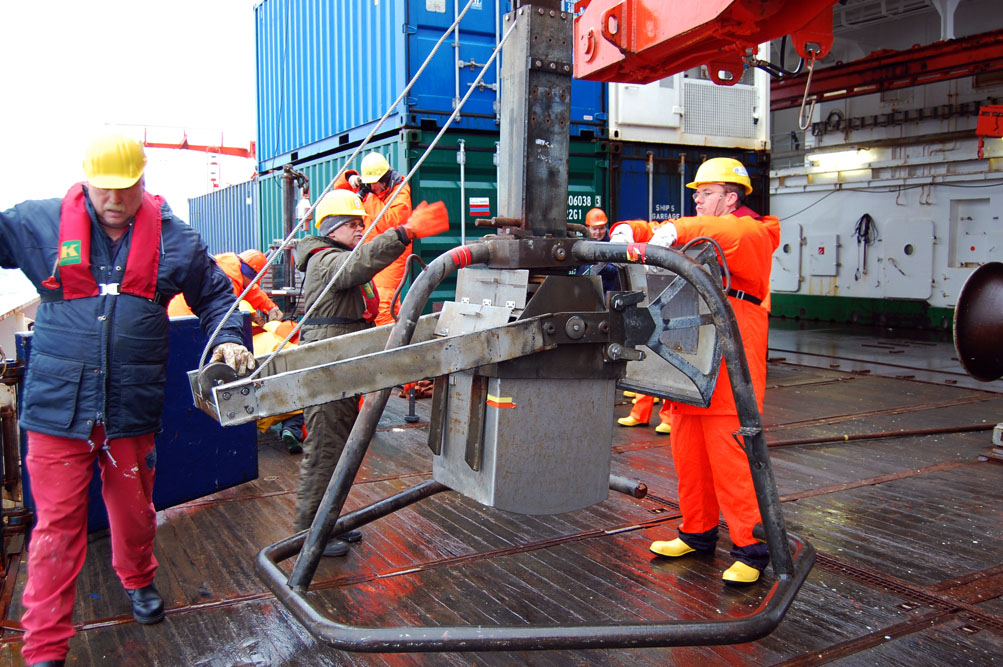 |
 |
Week 3
11.-17.12.2007
After recovering from our first station the vessel headed further south towards the shelf ice edge and the German research station Neumayer II. During the winter of our expedition (or rather summer, since we were on the other side of the earth) the new Neumayerstation was build. And our vessel not only provided the inhabitants of the “old” station with food and fuel but also the many engineers and workers building the “new” station. Unfortunately, the weather in that your contradicted all discussions of global warming. The sea ice was way heavier than normally and it took us longer than expected to reach our destination. Also, we were responsible to guide another ship laden with hardware for the construction site to the station that was no icebreaker. In the end we spent more time than intended for this logistic work and the ice prevented us from coming close to the station. The freight we had for the station had to be carried by small wheel loaders which took almost eight hours one way. We scientist were a lot luckier. We were allowed to visit the Neumayer II station and learn about life in Antarctica for half a day. For that a shuttle with helicopters was organized, and I tell you, flying a helicopter over ice masses, passing giant icebergs and seeing emperor penguin colonies below it so great, it’s indescribable. The Neumayer II station in contrast was not really my thing. It is basically an assemblage of tubes imbedded into the shelf ice, with containers inside that you live in. Since I’m a total outdoor person that goes crazy being stuffed insight with no natural light I bet I’d go crazy in there within few days. Hell, I got depressed after only two hours. The new station, which is finished by now by the way, is over ground with windows, which is a huge improvement for the poor people being stuck there. Apart from the visit to the station we had the chance to leave the vessel and walk on solid ground for two days. Solid ground is not completely true, as we were still in top of the sea ice and there were several thousand meters of water below us. It felt solid, though. Before entering the ice we were briefed about regulations concerning our behavior towards the Antarctic ecosystem. So, e.g., we were told that we were not to approach penguins closer than 5 meters, even 15 meters for Emperors. Unfortunately, nobody told the penguins. While everybody headed off towards a Emperor group I stayed behind a bit. In the far I saw one Emperor approach me. It came closer and closer, and when it was like 15 meters away from me I turned around and walked off, only to find that the penguin was following me still. It came closer and closer and closer, and then I simply dropped to the floor and stayed put. In the end the penguin stopped in his track about two meters before me and looked me up and down. It was totally hilarious. There was me, a biologist, thinking I was here in Antarctica studying the polar fauna. And then I was the one studied, by an Emperor penguin by all means. And these creatures are huge. With me sitting on the floor the bird was about a head taller than me, pretty impressive. In the end, it was all friendly and after it got bored by me it turned around and went to meet its kind. For me it was one of the most impressive moments that I’ll always cherish – I mean who can say that he/she was investigated by a penguin.
 |
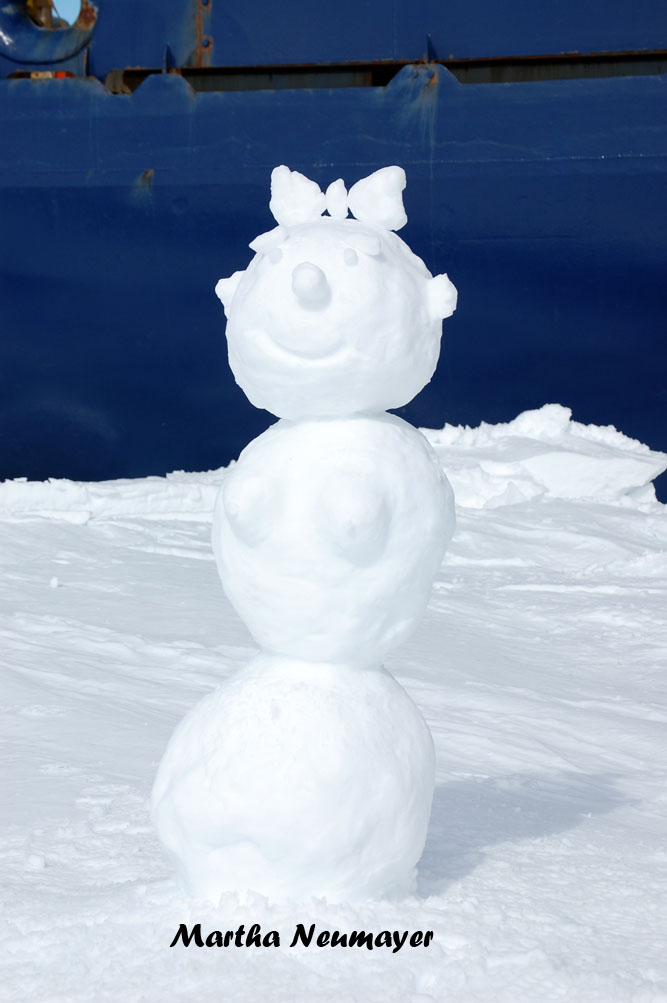 |
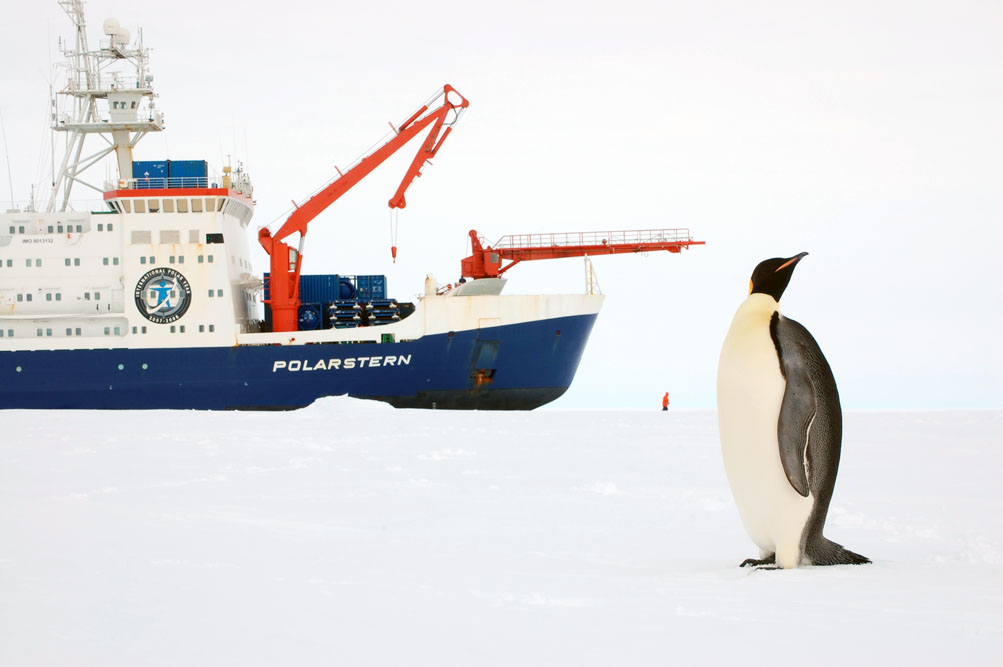 |
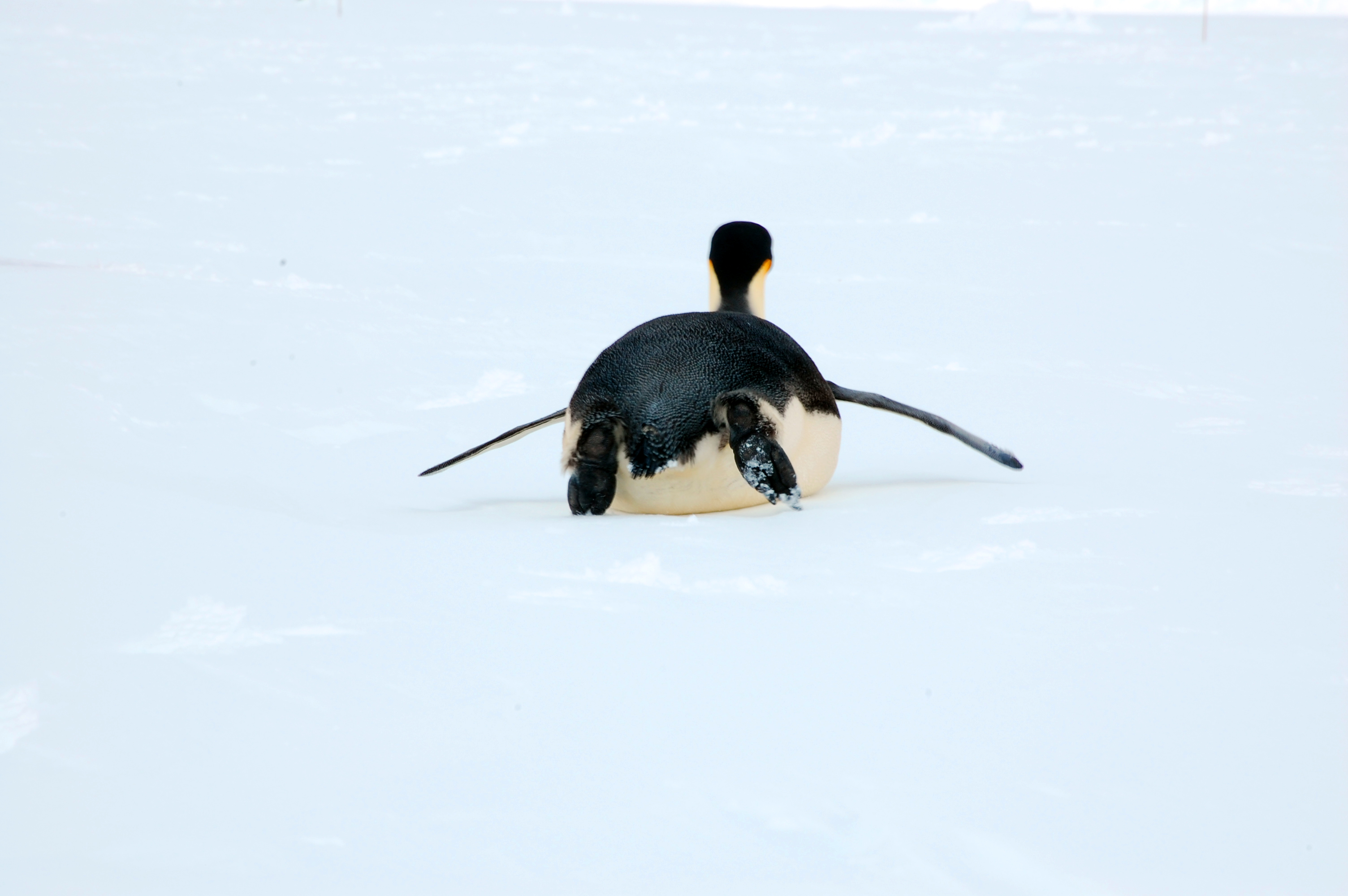 |
Week 4
18.-24.12.2007
What a crazy week… First we arrived at our second station. From the 21st to the 23rd days were packed with deployments of gear, sieving and sorting of samples, freezing in the cold and most of all, lack of sleep. But it was worth it. All gears worked without problems and we got lots and lots of new samples to spend our time with. By time, I’m here talking about a couple of years, because that’s what it takes to sufficiently study and analyze our samples. And then, before we were able to catch up on our sleep, Christmas Eve arrived. During the last weeks we’ve practice Christmas carols with instruments and vocals and rehearsed a little play called “Erna, der Baum nadelt” [“Erna, the tree loses its needles”]. We actually did the play twice, once in German and once in English and I directed both. So in the late afternoon we had a little mess with the original Christmas story and poems and carols and such, and after that we had a big party with great food and the plays and presents. One of the Dutch guys played Santa Claus addressing everybody with little personal anecdotes. Totally great. During the whole day little presents already appeared in the hall ways in front of people’s doors. Because even if you are not at home for Christmas you still think about your friends and try to make them smile, right!?! My parents actually gave me my Christmas presents before I left – big warm, red pjs with Snoopies on it. The perfect gift for travels to the Southern Ocean. I will definitely never forget this Christmas. With so much going on during the day it was really hard to miss your home.
 |
 |
Week 5
25.-31.12.2007
Whales!!! I’ve seen whales!!! I’ve never seen a free-living whale in my life. On Dec 26th it happened. I was standing on deck alone when suddenly out of nowhere a minke whale showed up right n front of the ship. I couldn’t believe my eyes at first. The whole situation was weird. I spent like everyday some time on deck looking out for whales. Normally I was never alone though. So that day I was amazed to have some solitude and in my head I was basically willing some whales to pop up. So really I thought I was dreaming when it actually happened. It was only short though, but word spread through the ship of the sighting and then others came and with them more whales came. In the end I’ve seen three minkes that day. And they were only a vanguard of what was to yet come in our remaining six weeks on board. In the end of the cruise I’ve not only seen minkes, but also humpbacks, a blue whale and orcas. But that’re tales to be told later on. During the week I had a special date with one of the helicopter pilots who showed me and Nils how the helicopters function. Very interesting and a perfect way to spend a day. This week we also had station number three, the deepest of all stations in over 5330 meters. The sediment there was totally soupy so that unfortunately the box-corer didn’t work. So, no deep-sea worms from this gear. But the EBS worked, the station was not a total waste then. The week was ended by New Years Eve – a day that always depresses me. I don’t know why, I just don’t like that day. So, while everyone else celebrated I went to bed early after midnight and looked forward to a better next day.
 |
 |
Week 6 & 7
01.-14.01.2008
These weeks nothing extraordinary happened. We had some new stations and elsewise basically everyday routine happened – meaning lab work and paper writing. We also had some parties and movie nights. Other than that the ever changing scenery around us never seized to amaze me. So here are some impressions.
Week 8
15.-21.01.2008
January 18th was probably the most exciting day of the whole cruise to me. Since none of the other days of this week have anything to compete, I will only tell about that day here. Every scientist gets the chance to go on one of the daily helicopter flights with the whale watchers. The list for that was determined by drawing numbers and given my luck I was one of the lasts on the list. So, O was not astonished when Ulli Bathmann, our chief scientist asked me to wake up Michi Schrödl (my cabin neighbor) so that he could go on his scheduled flight. Then when Ulli noticed that I had not flown yet he spontaneously switched Michi and me on the list and at 13h I was sat in the helicopter. This turned out the best switch ever and Michi is still more than jealous. The first 30 minutes were uneventful, we actually had to cancel the flight because of too much ice and change directions. And then suddenly it happened. Within five minutes we saw the first two minkes. We had enough fuel to actually follow the whales for some time and take pictures and shoot little movies. After some time the number of minke sights rose to six –they highest number ever counted during one flight. But it got even better. Already on our way back another whale, way bigger than the minkes, showed up. I first did not realize what happened because our two whale watchers Jan and Andre got overly excited. But then they told me that that whale was a blue whale. Only few scientists have ever come to see one. Jan has been to Antarctic for over ten years and it was his first. And there was I, first time in Antarctica,first scientific helicopter flight ever and I get to see a blue whale. The whale was about 20 meters long and really nosy. We stayed together for a good twenty minutes. The day already started off with plenty of minkes close to the ship, but a blue whale…!!! I’m a really, really lucky girl!
 |
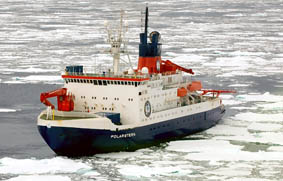 |
Week 9
22.-28.01.2008
January 22nd and 23rd was the invasion of the humpback whales. Absolutely unbelievable. We must have come across, or better ended up right in the middle of, a whale migration route. Within 24 hours estimated 100!!! Humpback whales crossed our pass on their way south while we already were on our way home northwards. This is really hard to describe, you must have seen it to believe it. There were whales everywhere. No matter where you looked you always saw them blowing somewhere. And some got really close, too. A few days later there even were two whales with their calf right beneath the vessel. They stayed with us for several hours, always diving below the ship and looking us right into the eyes. What a sight. The successful station we had at the end of the week was, after such days, only a minor event hardly worth mentioning.
Something else though is worth mentioning. Our Amphipod-trap is back. After two months we found ourselves back at the same position where we originally lost it. And, oh wonder, this time the releaser released. We were so amazed that it actually worked. And even more amazing was the work of the deck’s crew. It was one of the stormiest days of the whole cruise and normally the captain would have prohibited any work on deck, but since the trap was so expensive the crew put all their energy together and made the recovery of the trap possible. The ironic part of the whole story in the end is that in the trap there was only one single amphipod, and that was a really tiny one. The expected critters probably had found a way out of the trap again, if they ever entered it in the beginning.
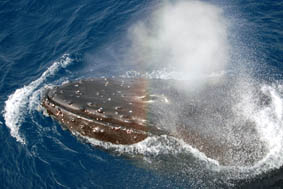 |
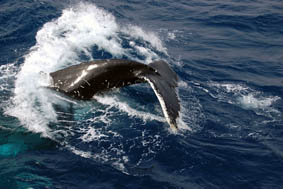 |
THE FINAL WEEK
29.01.-04.02.2008
The last week was heavily affected by packing. We were definitely on our way back home now. The weather got warmer and our heavy sweaters ended up in our suitcases first. Then it was time to get all the laboratory equipment back into the boxes and the boxes into the container. Also the gears had to be unscrewed and stored into the containers. All our samples were sorted, labeled and savely packed. It was a really weird atmosphere. Knowing that we would soon be home again our nerves got a lot thinner. After being stuck in a tight place together for so long seeing light at the end of the tunnel you suddenly start to notice all the little things about people that you don’t like. It’s like moving in with your long-time partner and suddenly noticing that he never closes the toilet lit. So, it was with a happy tear in my eye and a sad tear when we saw the skyline of Cape Town in the rising sun. I’ll never forget the wonderful sights and times I experienced during these ten weeks, and I’m thankful to all other participants, crew and science, for making these weeks until now probably the most impressive of my whole life. But still, I was also glad to get back home.
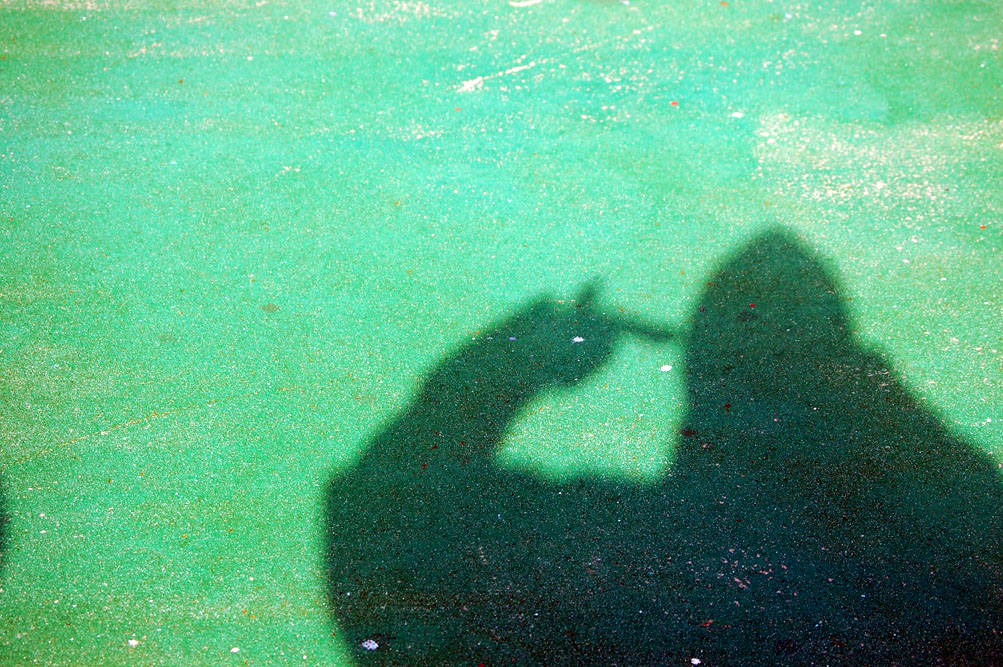 |
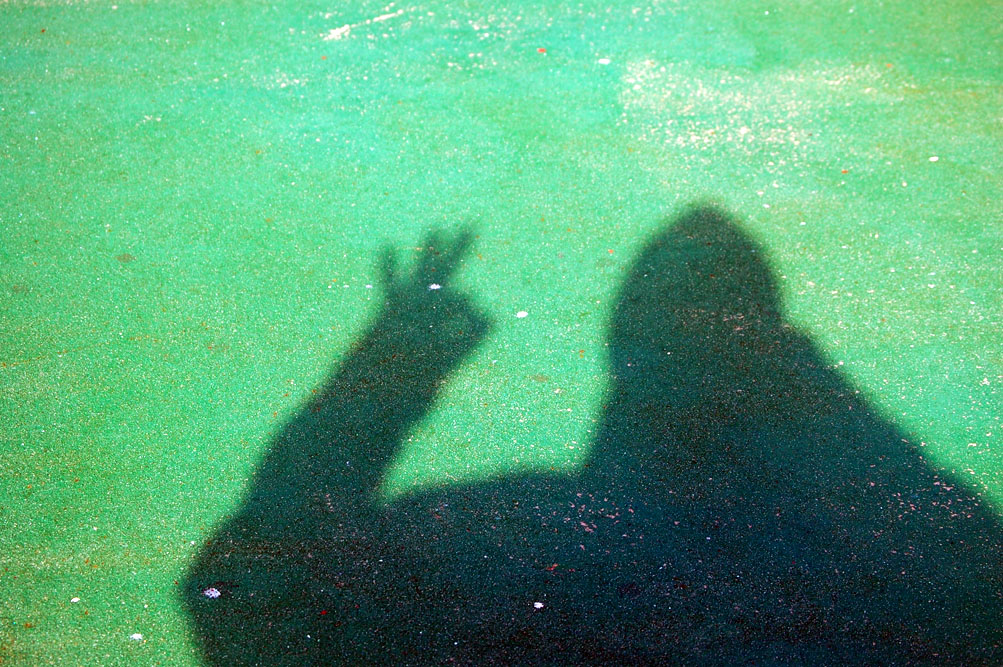 |












